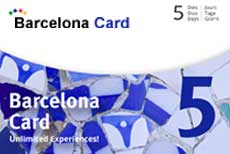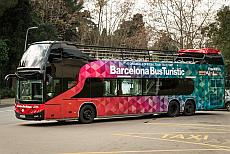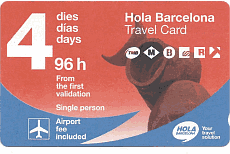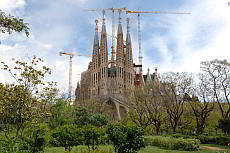Arc de Triomf
Arc de Triomf, former entrance of the World Exposition 1888 in Barcelona
Built of red bricks in the New Moorish style, the Arc de Triomf rises majestically at the end of the Passeig Lluís Companys. In 1888, the triumphal arch served as the main entrance to the World's Fair.
The coat of arms of the city of Barcelona and of the 49 Spanish provinces were placed around the arch.
These tours will take you past the Arc de Triomf
The architect Josep Vilaseca designed the monument as an allegory of the respect that the city of Barcelona made for the nations and provinces that participated in the 1888 World's Fair.
From the Arc you reach the Parc de la Ciutadella on the car free Passeig de Lluis Companys. The sculpture Homage to Picasso, the world-famous sculptor Tàpies and an artificial designed water ditch evaluate the road. By metro you get off at station Arc de Triomf with the lines L1 and L5.
The Moorish style, which was currently fashionable in Spain, serves as a counterpoint to the buildings that have been used in Barcelona to date: Gothic buildings and modern structures in the Eixample district. Vilaseca decorated the brick arch with sculptural motifs.
The combination of red brick and the row of friezes as decorative borders around the arch make it a uniquely beautiful landmark of Barcelona.
If you take a close look at the bow, you will soon realize that the triumphal arch was the gateway to modern late 19th-century Barcelona. If you look from the Park de la Ciutadella to the Triumphal Arch, the gate points towards the modern Eixample district.
The bats on the Arc de Triomf
You can find some stone bats attached to the triumphal arch. It was the emblem of King Jaume I. (1213-1276) (James of Aragon). Under Jaume I., Barcelona flourished economically and he liberated Valencia, Menorca and Mallorca from the Moors. On 31 December 1229 his troops concered the city of Medina Mayurka. The bat was his lucky charm. The city of Medina was later called Ciudad de Mallorca and in 1717 it was renamed again in Palma de Mallorca, as the city was called in Roman times.
The bat is still the emblem of Valencia and was for example also part of the first crest of FC Barcelona.
You will find the bat again and again in structures of Modernism, the Catalan Art Nouveau. Animal symbols were repeatedly used in the Modernism, which symbolizes the independence of Catalonia. The dragon, which symbolizes the patron saint of Catalonia Sant Jordi, is a good example.
To the Arc de Triomf
- Segway Tour: you'll pass the Arc de Triomf
- GoCar Tour: drive directly to the Arc de Triomf
- With the Bus Turístic to the Arc de Triomf
Important information
Surroundings
Find Hotels nearby
Address
Passeig Lluís Companys
Arrival
Metro: Arc de Triomf (L1, L5)
Parking nearby
Opening times
Open to the public
Admission
Freely accessible, the Arc de Triomf can only be visited from the outside.
Advice on visiting the Arc de Triomf
Although the Arc de Triomf is not one of the main attractions in Barcelona, it is still interesting: the Moorish-inspired architectural style is typical of early Modernisme. Likewise, the dragon and the bat are popular motifs of modernist architects.
It's worth checking out the Arch of Triumph if you're in the area anyway. To look at it in more detail, you need 15-20 minutes. You can then stroll to the nearby Parc de la Ciutadella and visit the zoo.
Book your accommodation in Barcelona here! All categories.
1-5*-hotel rooms, apartments, hostels.





